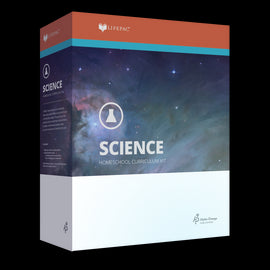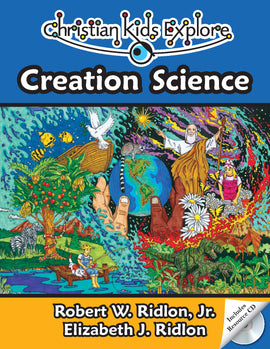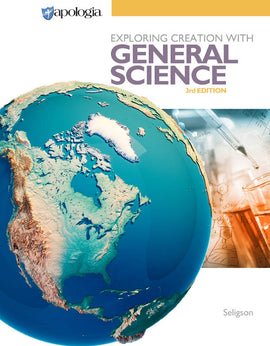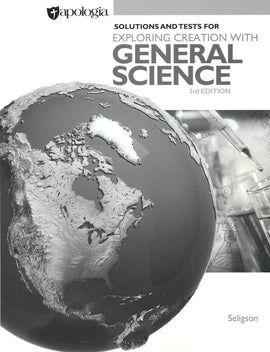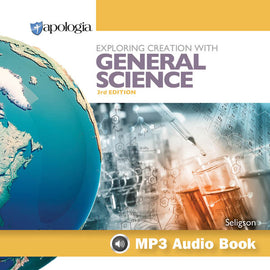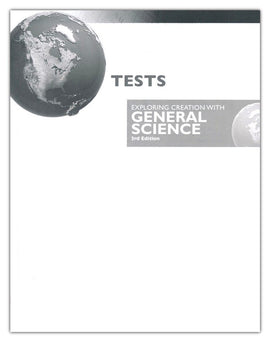Apologia Exploring Creation with General Science Student Notebook, 3rd Edition
Note-taking is a learned skill. While it might seem like there should be “answers” to questions and prompts found in the student notebook, we do not provide specific answers on purpose. The best way to take notes is the way that works for the student. That’s why the Student Notebook introduces the student to several methods for taking notes. At the beginning of each module in their Student Notebooks, students are encouraged to take mindful notes using techniques that expand as the school year progresses.
The Student Notebook also includes tips for writing good notes. Here are just some tips for writing good notes that students will be introduced to in this notebook:
- Make sure to include the main ideas of each passage and list the minor concepts under the main ones.
- Use the author’s style to guide your notes. If the author defines a term, make sure you include that definition in your notebook (you won’t miss it; we have it there ready for you to define).
- If the author is comparing or contrasting two things in the text, you should compare and/or contrast in your notes (again, we’ll provide you with some diagrams to help you do this).
- If the author is classifying in the text, you should classify in your notes (and remember to include any hints you think of).
- Don’t copy the text word for word. Always write your notes in your own words and make as many connections to ideas you already know as you can.
- If you see a word you don’t know, write it down and look it up so you can better understand what you’re reading.
The section in the Student Notebook where notes are recorded was created to give students prompts or questions to lead them to the important information they will read in the text. Answering these prompts will help them take effective notes. The notes a student takes are personal to them and their answers may be different from another student’s answers, but they can be sure to find the information on the pages they’re instructed to read.
Although there is no one right way to take good notes, after trying the techniques in this notebook students should find the way that works best for them. Then they’ll have a much better handle on all the interesting and sometimes amazing things they will learn in general science this year.
Additionally, we purposely designed this course so that the first 2 exams are open book – meaning that students can use their textbook and notebooks when answering questions. We encourage them to evaluate their note-taking efforts after each exam. Were their notes helpful in the exam? If yes, they are capturing important information. If no, they need to learn to pull more information out of the textbook. Don’t worry, we help them there too. Using colored text and prompts to steer them in the right direction, we essentially walk your student through the note-taking experience.
Apologia encourages parents to review their student’s notebook to make sure that the student is properly engaged, however, student notes should never be graded. You can choose to use the character-building points in your evaluations. Offer encouragement if you see your student struggling. Ask them to review with you what they are learning. Mentor to them how you took notes at their age. You will see that with each notebook module we offer tips and hints. By the time your student finishes the course, you’ll see highlighting and colored fonts, personal thoughts expanded and explored, and a true knowledge on how to personalize, capture, and understand new knowledge.
The General Science Student Notebook Includes:
- Daily Lesson Plan
- Breakdown of the assignments, detailing exactly what needs to be done each day
- Pages where the student takes notes. These pages include prompts to help teach the student how to pull out pertinent information from the text.
- Space to answer the On Your Own questions that are listed in each module.
- Space to record their results from the many hands-on activities.
- Solutions and Test Manual only for Exploring Creation with General Science, which contains answers to Study Guide questions, module summaries, tests, and test solutions. One test packet is included with this manual.
- Creation Connection pages where students record their intellectual, emotional, and spiritual reactions to what they are learning.
- Space to record answer to the On Your Own questions. These questions serve as review and prep for the tests.
Copyright 2019, ISBN 9781946506306, SKU 1006306
| Book Title | Apologia Exploring Creation with General Science Student Notebook, 3rd Edition |
| Publisher: | Apologia Educ. Ministries |
Note-taking is a learned skill. While it might seem like there should be “answers” to questions and prompts found in the student notebook, we do not provide specific answers on purpose. The best way to take notes is the way that works for the student. That’s why the Student Notebook introduces the student to several methods for taking notes. At the beginning of each module in their Student Notebooks, students are encouraged to take mindful notes using techniques that expand as the school year progresses.
The Student Notebook also includes tips for writing good notes. Here are just some tips for writing good notes that students will be introduced to in this notebook:
- Make sure to include the main ideas of each passage and list the minor concepts under the main ones.
- Use the author’s style to guide your notes. If the author defines a term, make sure you include that definition in your notebook (you won’t miss it; we have it there ready for you to define).
- If the author is comparing or contrasting two things in the text, you should compare and/or contrast in your notes (again, we’ll provide you with some diagrams to help you do this).
- If the author is classifying in the text, you should classify in your notes (and remember to include any hints you think of).
- Don’t copy the text word for word. Always write your notes in your own words and make as many connections to ideas you already know as you can.
- If you see a word you don’t know, write it down and look it up so you can better understand what you’re reading.
The section in the Student Notebook where notes are recorded was created to give students prompts or questions to lead them to the important information they will read in the text. Answering these prompts will help them take effective notes. The notes a student takes are personal to them and their answers may be different from another student’s answers, but they can be sure to find the information on the pages they’re instructed to read.
Although there is no one right way to take good notes, after trying the techniques in this notebook students should find the way that works best for them. Then they’ll have a much better handle on all the interesting and sometimes amazing things they will learn in general science this year.
Additionally, we purposely designed this course so that the first 2 exams are open book – meaning that students can use their textbook and notebooks when answering questions. We encourage them to evaluate their note-taking efforts after each exam. Were their notes helpful in the exam? If yes, they are capturing important information. If no, they need to learn to pull more information out of the textbook. Don’t worry, we help them there too. Using colored text and prompts to steer them in the right direction, we essentially walk your student through the note-taking experience.
Apologia encourages parents to review their student’s notebook to make sure that the student is properly engaged, however, student notes should never be graded. You can choose to use the character-building points in your evaluations. Offer encouragement if you see your student struggling. Ask them to review with you what they are learning. Mentor to them how you took notes at their age. You will see that with each notebook module we offer tips and hints. By the time your student finishes the course, you’ll see highlighting and colored fonts, personal thoughts expanded and explored, and a true knowledge on how to personalize, capture, and understand new knowledge.
The General Science Student Notebook Includes:
- Daily Lesson Plan
- Breakdown of the assignments, detailing exactly what needs to be done each day
- Pages where the student takes notes. These pages include prompts to help teach the student how to pull out pertinent information from the text.
- Space to answer the On Your Own questions that are listed in each module.
- Space to record their results from the many hands-on activities.
- Solutions and Test Manual only for Exploring Creation with General Science, which contains answers to Study Guide questions, module summaries, tests, and test solutions. One test packet is included with this manual.
- Creation Connection pages where students record their intellectual, emotional, and spiritual reactions to what they are learning.
- Space to record answer to the On Your Own questions. These questions serve as review and prep for the tests.

















